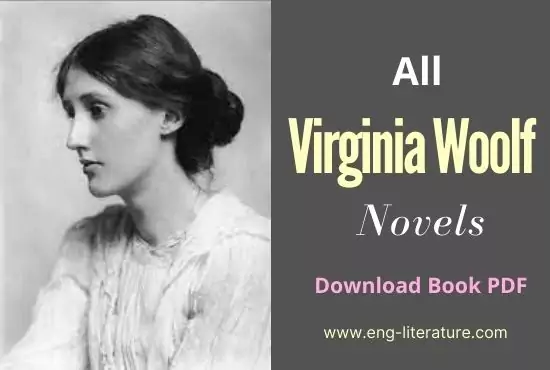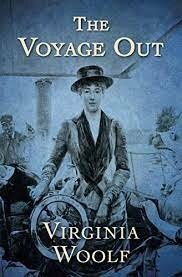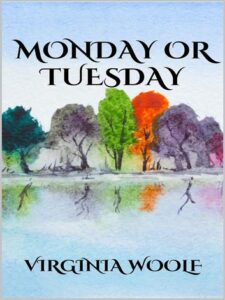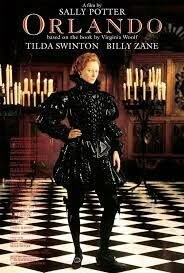Virginia Woolf Novels
Introduction
Virginia Woolf comes from a respectable family of high literary and cultural standards. She started her literary career by writing articles and essays for literary journals. After her marriage she wrote profusely for the Hogarth Press, which brought out the works of distinguished men of letters of the day. She earned at first the reputation of a critic of great insight and sound literary taste and judgement. Her best works of criticism are The Common Reader I, The Common Reader II and The Death of the Moth and the Moment. She wrote a number of short stories and some biographies, one fanciful, and a fragment on the life of Robert Browning, narrated through the imagined memories of Flush, Elizabeth Barrett’s dog (name of Browning’s wife) and the other a full-length biography of Roger Fry. But she is primarily known as a novelist and her reputation is based on a few novels, which are great works of art. Brief outline sketches of her major novels are given below. By reading them the students will be able to form a good idea of her art.
The Voyage Out by Virginia Woolf
It is her first novel and was published in 1915. As the title suggests the novel deals with the author’s journey into an unknown land and like the first novel of any other writer or writers it lacks in strength and conviction. and is rather uncertain. It suggests or even narrates deep disturbances in the inner lives of men and women. The mysterious immensity and loneliness of existence haunts and mind of Rachel Vinrace, the central character. The work reminds us of Jane Austen in its deliberate attention to details and the great care brought into exercise in writing it and in its keen observation of the self-conscious behaviour of a small group of people. Externally the structure of the novel is more or less conventional. It abounds in narration description and conversation between two or more of the characters. Rachel is brought into a variety of experiences with a large number of people. She falls in love with Terence Hewet and as she emerges into the life of a normal young woman, she falls ill and dies of tropical fever. Thus, The Voyage Our is a straight forward narrative of a young girl, who is thrust suddenly out of a backwater into the whirl of life, falls in love and dies.
Download The Voyage out Book PDF
[su_button url=”https://onemorelibrary.com/index.php?option=com_djclassifieds&format=raw&view=download&task=download&fid=10229″ style=”flat” background=”#e70910″ color=”#ffffff” size=”20″ center=”yes”]Download PDF BOOK[/su_button]
Night and Day by Virginia Woolf
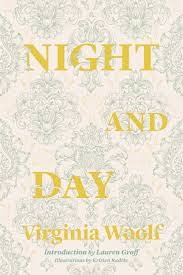
This is her second novel published in 1919. It is the longest of her novels and as a comedy of manners, is the most conventional in form. In depicts the behaviour of its principal characters against the social background of upper middle class London. Katherine Helbery, with whose life it deals, is proud of her ancestry and for sometime has been advancing towards marriage with William Rodney in accordance with the social standards of her circle. She wonders whether falling in love and marrying may not be a matter of quitting life for a backwater. She accepts him at first but she reacts soon against her society and finds another young lady for him to marry. Her engagement with him is broken and she marries another young man from the lower middle class, Ralph Denham by name, who is a clerk and whom, after a series of conventional complicated situations, she discovers that she loves. In Mary Darchet we find a worker whose love for work rises above her love for Ralph. The novel closes with three attitudes towards society; Rodney and Otway accept the society. Mary desires to reform it, while Katherine and Denham reject it.
The scene of the novel is London and the time is just before the war and the theme is about love, marriage and the family. It is unlike The Voyage out in tone, as it begins like a comedy of Manners with a tea party. The Night and Day has “more depth than the others”, as Virginia Woolf states, and we should have no hesitation in accepting it. It is a much more matured, finished and satisfactory book than The Voyage Out. It is a novel about silence as it were, “the things people don’t say”. The characterisation of the proud introspective Katherine Helbery is far more convincing than that of Rachel Vinrace in the previous novel.
Download Night and Day Book PDF
[su_button url=”https://onemorelibrary.com/index.php?option=com_djclassifieds&format=raw&view=download&task=download&fid=10219″ style=”flat” background=”#e70910″ color=”#ffffff” size=”20″ center=”yes”]Download PDF BOOK[/su_button]
Monday and Tuesday by Virginia Woolf
The book contains eight short stories, the best of which is Kew Gardens. It is a story about life as Bergson conceives of it. “Life”, to Bergson, “is a spiritual force, a vital impetus equal to pure, as against chronological time and equal to human consciousness, attains to awareness, not measurably by any amount of chronological time (or space) when, that is, human consciousness attains to holding eternity in an hour as Blake said, “Life, in this sense, is a battle between freedom (eternity) and necessity (spatial time) for the purpose of inserting as much indetermination into matter as possible.
Also Read:
- Mrs Dalloway | Summary, Movie, Book PDF, Audiobook
- Themes in Mrs Dalloway by Virginia Woolf
- Mrs Dalloway as a Psychological Novel
- Symbolism in Mrs Dalloway
- Symbols in To the Lighthouse by Virginia Woolf
The story exhibits the vital impetus in vegetable, insect and human life fighting with different degrees of success the battle against matter. An Unwritten Novel, another story in the collection, is a burlesque of Freud; Blue and Green is an undistinguished prose-poem, which by the green day and blue night is symbolic of action and thought. A Society is a story full of humour, dealing with the battle between the sexes, exhibiting none of the sophistication with which Virginia Woolf was to deal with the problem later on.
Download Monday and Tuesday Book PDF
[su_button url=”https://onemorelibrary.com/index.php?option=com_djclassifieds&format=raw&view=download&task=download&fid=10209″ style=”flat” background=”#e70910″ color=”#ffffff” size=”20″ center=”yes”]Download PDF BOOK[/su_button]
Jacob’s Room by Virginia Woolf
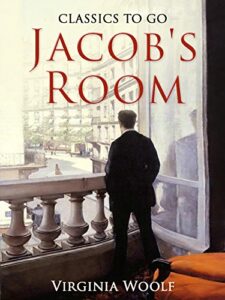
Jacob’s Room is her third novel, which is one third in length of Night and Day. It takes into its span almost a quarter of a century, from about 1891 to about 1915 and its action takes place in England, France, Italy and Greece. It has fourteen sections, and the interval between each is pointed out by a transition of time and place. Each of these sections is further sub-divided as the novelist moves from one character to another or interferes to comment. The novel has no plot, in the common sense of the word. It narrates the story of Jacob Flanders who is one of the three children (all boys) of Betty Flanders.
The novel marks an advance towards full maturity of the novelist and the life of Jacob Flanders is the theme of the novel although it is not life as we normally think of it, which we find here. His father had died two years before the time the novel begins. Mr. Floyd, a clergyman, friend of his mother, teaches him some Latin and he goes to Cambridge. He works in a law office in London, reads and thinks a good deal and has many love-affairs. One of his vacations in spent by him touring Europe, and he is killed in battle shortly after the out-break of the war. Jacob is never seen at work, he is not seen in the war, he is also not aware when and how and where he is killed.
The novelist does not lay stress at places where the readers would expect him to do so, but on trivial incidents in his life. The novel is not only plotless in the conventional sense, but its plot is its own in the individual sense. He is seen as a character not in the round, but in a series of psychological aspects, or impressions, or memories of deep spiritual insight. His consciousness as a child, as a student at Cambridge, as a traveller and as a young man in love is rewarded until he dies in the war with only a few pairs, a pair of old shoes and the recollections and associations of those who knew him. The human beings are made real by drawing the attention of the readers in the processes of thought, in the working of memory as well as of anticipation and in the impressions made on the mind and memories of those around. It may have some resemblance with the life-novels, which were extremely popular at this time, but in the main it has nothing in common with them.
Like Fielding, Virginia Woolf comments upon her heroes and provides thus a philosophical perspective. Jacob is interested keenly in ideas. What he thinks is of greater significance than what he does and his mind offers a genuinely interesting study. As D. Waldo Clarke points out, “The flowing nature of consciousness and the reality of the life of the spirit are well-presented in Jacobs Rooms’, but there is a lack of unity in the novel.”
Download Jacob’s Room Book PDF
[su_button url=”https://onemorelibrary.com/index.php?option=com_djclassifieds&format=raw&view=download&task=download&fid=10204″ style=”flat” background=”#e70910″ color=”#ffffff” size=”20″ center=”yes”]Download PDF BOOK[/su_button]
To the Lighthouse by Virginia Woolf
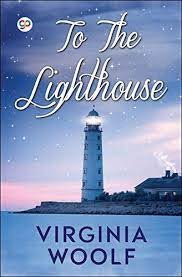
There are three divisions in To the Lighthouse viz. The Window, Time Passes and The Lighthouse. Part I is concerned with the events of one evening and night, and the third part with the events of one morning ten years later. The unity of place is preserved throughout and the setting throughout is precise and vague. As is usual with Virginia Woolf attention to accuracy of facts is lacking here as well and the action is insignificant
The novel describes not an act or series of acts, but movement movements or action itself. The characters are for the most part seen in action and only three things, Mrs. Ramsay, the lighthouse and Lily’s painting remain fixed. Mrs. Ramsay is the most successful of Virginia Woolf’s creations and she is depicted more as a symbol than as an individual. She emerges in the novel as a woman who appeals most. The novel is a story of contrast between two kinds of truth Mr. Ramsay’s and Mrs. Ramsay’s. For Mr. Ramsay the truth is the movement towards truth. for truth is always being made and is never made. The novel is regarded by most of the critics as Virginia Woolf’s masterpiece because of its technical ability to exhibit the unity of effects.
Part I, The Window, takes the readers to a house-party on the island of Skye. Professor Ramsay and his wife are holidaying here with their children and some friends. They extend a promise to their youngest son, James, to take him to see a lighthouse. The father predicts unfavourable weather conditions and the journey to the lighthouse is deferred.
Part II, Time Passes, narrates how during the long years of war the house is abandoned and dust, silence and loneliness settle upon it. The family and two of the children return to the house without Mrs. Ramsay who has died.
Part III, The Lighthouse, describes the visit to the lighthouse after a lapse of many years. The quiet, efficient and thoughtful character of Mrs. Ramsay imparts a unity which outlives her death, to the many varying impressions and flux of existence. Her role is similar to that of Mrs. Dalloway in the novel of the same name. She fulfils the function of creating a warm and convincing harmony in the apparent chaos of daily life. On passing from her consciousness to that of others who are near her, we are constantly made aware of the significance of such poetic symbols as the lighthouse, the slow passing of time, the flowing quality and inconclusiveness of all life and the deep desire to known what life actually means.
To the Lighthouse was published in 1928. If followed Mrs. Dalloway, a novel which is her greatest claim to fame. It is in many ways her most popular work and makes easier reading and is largely conventional in its structure. But it reveals her habit of playing tricks with time.
Download To the Lighthouse Book PDF
[su_button url=”https://onemorelibrary.com/index.php?option=com_djclassifieds&format=raw&view=download&task=download&fid=28310″ style=”flat” background=”#e70910″ color=”#ffffff” size=”20″ center=”yes”]Download PDF BOOK[/su_button]
Orlando: A Biography by Virginia Woolf
This novel was published in the same year as to the Lighthouse. It Stands apart from the rest of Mrs. Woolf’s fiction as it is a fantasy-biography. It treats of the life, personality, ancestry and literary background of her friend, Victoria Sackville West. Orlando at first meets us in the Elizabethan period during which as a youth passionately falls in love with a Russian princess and becomes a writer. We next find him as British Ambassador extraordinary in Turkey. He is transformed later by magic into a woman and as such lives in the eighteenth, nineteenth and early twentieth centuries. Thus it moves in time from about 1586 to October 11, 1928. Its action takes place in England and the Near East.
The hero-heroine in Orlando evolves during 342 years of his existence from a handsome Elizabethan boy of 16 to a twentieth century woman of 36. As a young boy he catches the fancy of Queen Elizabeth I and is made her treasurer and steward. He fails to marry Lady Margaret O’Brien, O’ I are O’ Reillery Tyrconnel, (alias Emprosyne), which leads to her exile from the court. He becomes Ambassador to Turkey where he negotiates between Charles II and the Turks. He is conferred a dukedom as a reward of his services. He is surprised to find one morning after a week of trance changed himself into a woman.
As a woman, cannot continue as an Ambassador, hence she joins a gypsy tribe. She comes to England and settles down at her huge ancestral estate. She is pronounced indisputably to be a woman and her three sons declared illegitimate. He is annoyed continually by the Archduchess Harriet, in order to get rid of whom she goes to London in search of life and love. She has a series of adventures there, which include visiting fashionable saloons and meeting Pope and Addison. He changes quickly from 18th to 19th century clothes and becomes a real woman at last. She marries Marmaduke. Her first child is born to her and she wins a prize for her poem, The Oak Tree. Except for the fact that she has 350 bedrooms in her mansion, she is similar to any other twentieth century woman.
The book is not only unique for the originality of its construction, but also for the clearness and picturesqueness of its description. Its most interesting part is that which depicts the Elizabethan period in all its rich movement and colour. The humorous liveliness with which the story is told, makes it different from the other novels of Mrs. Woolf.
Download Orlando Book PDF
[su_button url=”https://onemorelibrary.com/index.php?option=com_djclassifieds&format=raw&view=download&task=download&fid=10224″ style=”flat” background=”#e70910″ color=”#ffffff” size=”20″ center=”yes”]Download PDF BOOK[/su_button]
The Waves by Virginia Woolf
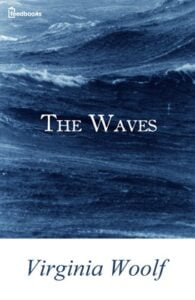
Her next novel, The Waves, published in 1931, marks a return to the method of Mrs. Dalloway and to the Lighthouse, which means the abandonment of the fetters of plot, dialogue and exterior description. It is characteristic of a new mode of communication. The inner life of characters is revealed and the nerve-centers of its six principal characters are shown upside down from inside. The characters comment fully on their journey from youth to age and they attempt to give in this manner a thorough revelation of their personalities. But they are still stiff and less human than the characters of the other novels. Two characteristics of this novel are its inwardness and concentratedness.
The novelist narrows her vision in this novel and concentrates upon the inner monologue of six persons, thereby to discover with profound insight the experience of living. The solitary consciousness and the reception of experience and not the issue in action is faithfully presented. The basic structure of human personality with its capacity of joy, pain, its roots in the earth and its dread of life, its bondage to self and its out-reaching to others, its perceptions in parts and its longing for perfect beauty and truth, all these are conveyed through the six characters of This novel.
In its essential pattern The Waves seems to be simple enough it is written in descriptive and dramatic type of prose. The former is divided into ten brief sections, printed in italics. The first eight of the descriptive sections are followed by a series of soliloquies and after the ninth section there is a single soliloquy, which is, indeed, the longest section in the book.
The descriptive parts are devoted to a description of a single day on English beach near the nursery school. The first of the descriptive passages is depicted from the shore at dawn. But as the sun goes higher up in the sky, the reader shares in the observation with the sun of the whole of Great Britain, parts of France, Spain and Africa and the sea. The scope is again perceived to decrease as the sun sets. The time of the year is portrayed as passing concurrently with the time of the day, as in the morning it is spring, in the noon, it is summer and soon. The time of the day in each section is the same as the ages of the speakers in the soliloquies as for instance, they are children at dawn, adolescents in the early morning, and so on.
The writer presents to us a tissue of infinite perplexity, in which each personality is mirrored in the minds of the other five, and that multiple image is again multiplied in the great mirror of the whole novel. The descriptive part is an artistic whole and can be studied as such, but its symbolic significance and inner significance is revealed only when it is read with the dramatic sections.
Similarly the dramatic sections can be better understood when they are read together with the descriptive sections with all their direct and indirect references. The two, though independent when considered separately, are wholly dependent upon one another and constitute an integral part of the whole. The soliloquies of six persons viz., Bernard, Susan, Neville, Jinny, Louis and Rhoda constitute the dramatic sequences of the novel which have definite place-setting and no time-settings. The six characters are different from one another but they too can be divided in three pairs of opposites. They, however, are identical in one way. All of them ask questions about life and experience, as none of them is content with the social standards of everyday life.
Download The Waves Book PDF
[su_button url=”https://onemorelibrary.com/index.php?option=com_djclassifieds&format=raw&view=download&task=download&fid=28290″ style=”flat” background=”#e70910″ color=”#ffffff” size=”20″ center=”yes”]Download PDF BOOK[/su_button]
The Years by Virginia Woolf
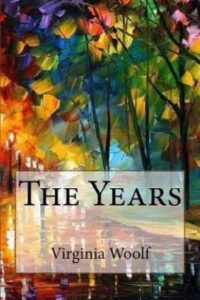
It is her last but one novel. It was published in 1937. It is like The Waves, also concerned with the concept of time. It marks a return to the manner and method of Mrs. Dalloway and to the Lighthouse. The life of the Pargiter family exhibits the same overflowing nature of the Consciousness and of time as a meeting ground of past and present as was in the first two novels. Like Galsworthy’s The Forsyte Saga it deals with the City and family life with only this difference that The Forsyte Saga is concerned with the material plane, while The Waves deals with the life of the spirit and personality. There is no order and coherence in the novel; it is a difficult reading, hence it is regarded as a failure.
The novel follows a number of people from youth to age and there are ten relatively short sections followed by a long “summing-up”. Each section is introduced by a description of the weather and the same device is followed in respect of other subdivisions within each section (i.e., they also begin with description of weather). These descriptions produce a union of opposites apparent) with the novel. The Waves had little social consciousness. The Years on the contrary is dependent for its effect on an immediate and wide social consciousness. It contains characters of every class of English Society. It is concerned with good and evil, right and good. It justifies, as it were, the ways of God to men. It is a scenic novel, where emphasis is laid more on people and action than on individual, mood and attitude. It contains symbolic values of deeper significance than The Waves and is less dependent on Bergsonian values and concepts.
Download The Years Book PDF
[su_button url=”https://onemorelibrary.com/index.php?option=com_djclassifieds&format=raw&view=download&task=download&fid=10239″ style=”flat” background=”#e70910″ color=”#ffffff” size=”20″ center=”yes”]Download PDF BOOK[/su_button]
Between the Acts by Virginia Woolf
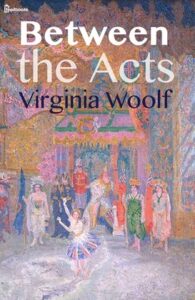
This is the last novel of Virginia Woolf, which was published in 1941. In other novels the sea is presented as a symbol of life and vitality, in this novel it is a symbol which divides and isolates. A pageant is staged in a barn or the manor house in countryside, according to weather. The events which occur between the acts of this pageant are the subject matter of the novel, hence the title and its appropriateness.
The action of the novel is limited to 24 hours. The main characters are from the family which owns the house. Mr. Oliver, his son, daughter-in-law, their two children, the mistress of the pageant and acquaintances are the main characters in the novel. The minor characters are the servants of the house and the village community, and the parson to the village idiot. The plot is rather simple in which the various aspects of the present are seen in relation to the past history of England. The novel also admits into it certain subjects relevant to the writer the rhythmic ebb and flow of love, and the impulse to find or to create beauty and significance. It is the most symbolical of Virginia Woolf’s novel, notwithstanding the fact that she is more or less is busy in “summarizing” (human relations).
Download Between the Acts Book PDF
[su_button url=”https://onemorelibrary.com/index.php?option=com_djclassifieds&format=raw&view=download&task=download&fid=10194″ style=”flat” background=”#e70910″ color=”#ffffff” size=”20″ center=”yes”]Download PDF BOOK[/su_button]

Hello, Viewers! Besides being the Founder and Owner of this website, I am a Government Officer. As a hardcore literary lover, I am pursuing my dream by writing notes and articles related to Literature. Drop me a line anytime, whether it’s about any queries or demands or just to share your well-being. I’d love to hear from you. Thanks for stopping by!
